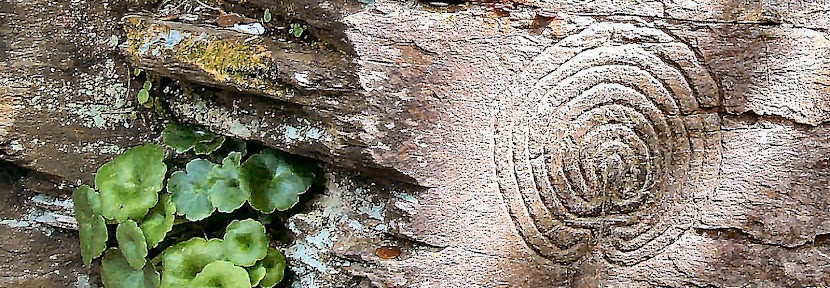Lying on the dramatic north coast, midway between St Ives and Newquay, the coastal village of Porthtowan nestles amongst one of Cornwall’s most iconic and historic mining landscapes, now part of the UNESCO world heritage site. Perhaps less well known is the hidden history and folklore of the area, where ghosts, legends and dark mysteries abound. Robert Hunt, the eminent collector of Cornish folktales and narrative had this to say about Porthtowan Beach:
The Voice from the Sea
A fisherman or a pilot was walking one night on the sands at Porth-Towan, when all was still save the monotonous fall of the light waves upon the sand. He distinctly heard a voice from the sea exclaiming,— “The hour is come, but not the man.” This was repeated three times when a black figure, like that of a man, appeared on the top of the hill. It paused for a moment, then rushed impetuously down the steep incline, over the sands, and was lost in the sea. (1)
This paragraph is fascinating, and from the description it is easy to stand on the beach today and visualise the order of ghostly events. Having lived in Porthtowan and stood by the tide line after dark many times, it is clear that the fisherman or pilot was walking along the beach heading towards the east cliff. For this dramatic cliff rises steeply from the cove and has a distinct and steep pathway which adjoins the sand at its base. It is amazingly easy to imagine this dark figure standing on the clifftop, briefly silhouetted against the night sky, then heading down the precarious path and onto the sandy beach, before running into the pounding waves.
At some point in time, an extra piece of the tale has been added, possibly through a village droll teller, where the dark figure heads into the waves towards a ghost-ship, which mysteriously appears from a sea-mist on the ocean’s horizon. Many ships have been wrecked nearby and again, Robert Hunt recorded that where a ship was wrecked the souls of the drowned sailors will haunt the shore and call out to the dead. (2)
As the tide recedes, other adjacent coves become accessible, and Lushington is a rocky cove immediately to the west of the main beach, guarded by the famous Tobban Horse rock. This beach always seems to have a cold feel about it, even on warm sunny days, and many folk wont hang around here for too long.
It was on the clifftop above, at RAF Portreath where some of the deadliest chemical weaponry was developed during the 1950s in a secret government installation known as Nancekuke Base. The facility closed in 1980, and many of the buildings and some equipment were buried on the site.(3) However, rumours quickly spread that the remaining chemicals were disposed of by pumping them into the sea through the vast network of old mine shafts on Nancekuke common. Today it is a military radar station, and during the mid-1980s many of the radar technicians witnessed a man dressed in a pilot’s uniform walk through a closed hangar door. It is believed that he is the restless spirit of a 2nd world war pilot who crashed nearby. (4)
 |
| Wheal Coates, on the coast between Porthtowan and St Agnes. Ghost lights have been reported here. Watercolour by Paul Atlas-Saunders |
[2]
Ibid
[3]
https://api.parliament.uk/historic-hansard/commons/2000/jan/18/nancekuke-base
[5]
Myths and Legends of Cornwall by Craig Weatherhill and Paul Devereux, p 61






